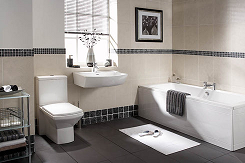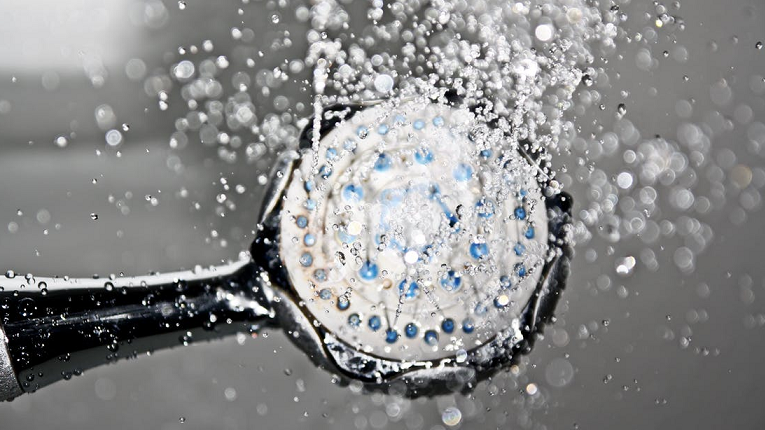Is the popularity of a good relaxing bath in decline?
A new study from online bathroom retailer UK Bathrooms seem to think so, as their research has found order trends and customer feedback for baths has had a 54% decrease in the last year. On the other hand, the popularity of showers seems stronger than ever which has seen a staggering 72% increase. The study even found that three quarters of British homeowners would choose to install a shower in their home over a bath.
The survey looked at 1342 homeowners in the country, and was part of ongoing research into the opinion about bathroom styles. Respondents were also revealed the reasons why they considered showers to be superior to baths - 46% considered it much quicker, while 34% also added that a shower left them feeling much cleaner than a bath did.
Moving on to bathrooms themselves, 40% of respondants only had showers in their bathrooms, with 28% only having a bath and 32% owning both. If they were to move or rennovate their bathrooms, 78% said that installating a shower was of much higher priority than a bath. Why? 51% considered showers to be the speedier option, while 37% also preferred it because showers take up much less space than a bathtub.
Whether you're a bath or shower person (or both!), the winner here is still bathroom installers and plumbers in general. Whether your customer wants a shower or bath (or again, both!) installed, a fully qualified plumber is the only man for the job. If you're interested in specifically going into bathroom fitting, Access Training also offer specialised bathroom fitting courses to provide trainees with everything they'll need to know to perform the job to a professional standard.
To find out more give Access a call on 0800 345 7492 today.

Firstly when you’re having problems with your electric shower don’t attempt to fix it, this is false economy – you’re much better off changing the item completely. Here are a few steps to show you how to change an electric shower.
- Step One - Safely take off the front cover of the electric shower box. There will be at least 1 or possibly 2 small screws holding this in place. Next, take off the front temperature and control knobs by pulling them straight off (this shouldn’t be too difficult to do). With the front cover off you should be able to see a valve on the water pipe going into the shower unit, it should have a screw slot in the middle of the valve. Turn this a ¼ turn either way and test the shower to see if this has turned off the water. You can use the control knob by temporarily re-attaching it to the shower to get the water to flow.
- Step Two - When changing an electric shower, you must turn off the electric supply at the consumer unit (or fuse board as it’s commonly known). The fuses/trips should be marked but if they’re not, the 1 of 2 possible trips you are going to turn off will be either a 35 amp or a 45 amp depending on the Kilo-watt power of the shower. For a 35 amp fuse/trip, the shower should not be over 8.5 kilowatts. For a shower that is greater in kilowatts, the fuse/trip will be a 45 amp.
- Step Three - The next step in changing your electric shower is to check that the electric has been turned off by either pulling the cord switch in your bathroom or the wall-mounted one outside. Run the shower and make sure that the running water isn’t warm/hot. With the electric turned off, you can put a notice hanging from the consumer unit to warn others not to turn back on.
- Step Four - If the water is now off you can take off the water connection where it connects closest to the unit. Undo the electric cable connections and remove the unit, remembering to replace like-for-like in the kilowatt power rating of the unit (this rating can be found somewhere on the old unit, and on the front cover box of the new one).
- Step Five - When you have connected the new unit to the electric cable and to the water supply, check the water flow through the unit first, then with the cover on the unit you can turn the electric fuse/trip back on. Go back to the unit and turn the wall-mounted switch or pull the cord on, turn up the thermostatic control on the unit and the water control knob to on. Your new shower should be working, but with the new shower unit you will have the manufacturer’s instructions in the box. Follow these carefully, and it should be safe for you to install.
- Mark Lewis
Would you like to learn more about the kind of DIY plumbing tasks you can perform yourself around the home? Access Training offers a number of bespoke plumbing courses for both DIY enthusiasts and those looking for a career as a professional plumber. You'll have access to our state-of-the-art training facilities and be taught by fully-trained plumbers with many years' experience in the trade. To find out more, give us a call on 0800 345 7492.
Asking this raises a number of other questions. The plumber may be capable of connecting cables to the shower but does he know how to check that the existing cable can take the load current of the new shower? Does he know how to carry out all the required electrical tests that are required when installing new electrical equipment? Does he have access to the required test equipment to allow him to perform the tests (this equipment is expensives - in the region of £600+, and usually only carried by qualified electricians)? If he has access, is it the right equipment? Is it manufactured to the revelent BS or EN standards? Has it been well maintained and regularly calibrated? Does he have and can correctly fill out the correct electrical test certificate for the job? Has he informed you that you will need to notify the local building authority control (any electrical installation work that has been carried out in a room containing a bath or shower has to be pre-notified as a requirement of Part P). Oh yes I nearly forgot - there is also a charge payable to the Building Control Authority to notify works under Part P!
Are you starting to wonder if the plumber is the man for the job? If you have any doubt whatsoever, no matter how small - get a "proper" electrician to do the work. One who has undergone training and experience in doing the work. Engaging an electrician who is a member of a recognised 'Competent Person Scheme' will save you the cost and hassle of dealing with the Building Control Authority.
Have you made your mind up yet?
- Mark Jenkins
Alternatively, would you like to have a go at this yourself? Considering a career change to become an electrician? Access Training offer a number of bespoke electrician courses to people of all ages and backgrounds, from professional qualifications to DIY courses. With qualifications including general installation, Part P training, PAT Testing and more, we're certain we have the right electrical course for you. For more information call us on 0800 345 7492.